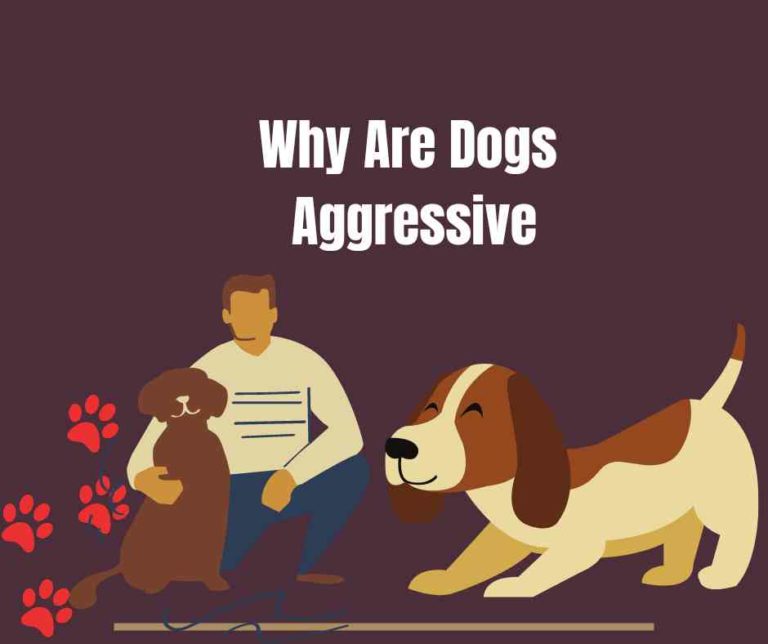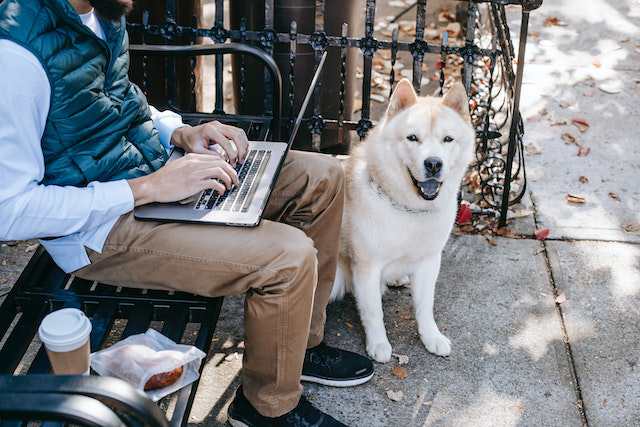12 Top Signs of Stress in Dogs You Should Know

Let’s discuss the signs of stress in dogs… We all know that our furry companions can’t speak our language, but they do have their own ways of communicating with us.
In today’s blog post, let’s dive into the fascinating world of canine emotions and explore the telltale signs that your precious pup might be feeling stressed.
So grab a cup of coffee, get cozy, and let’s unravel the mysteries of your dog’s stress signals together!
Signs of Stress in Dogs
Some signs of stress in dogs include yawning, panting with a curled tongue, pacing, licking their lips, ears pinned back, dilated pupils, and the whites of their eyes showing (whale eye).
Other signs may include changes in eyes and ears, such as dilated pupils and rapid blinking, as well as tucked ears, tucked tails, raised hackles, and lip-licking.
Additionally, destructive behavior, incontinence, sudden aggression, repetitive behaviors, pacing, and restlessness can also indicate stress in dogs.
Let’s break it down further…
The following are some of the most common signs of stress in dogs:
1. Increased Heart Rate and Panting
When a dog is stressed, their sympathetic nervous system gets activated, leading to an increased heart rate and panting.
This physiological response is similar to the “fight or flight” reaction in humans. The dog’s body prepares for action, whether to confront the stressor or escape from it.
It’s important to note that while panting is a normal behavior for dogs, excessive or rapid panting, especially when not associated with physical activity or heat, can be a sign of stress.
2. Whale Eyes (showing the whites of their eyes)
“Whale eyes” in dogs can occur when a dog is feeling stressed, anxious, depressed, or threatened.
They may avert their gaze while exposing the whites of their eyes, which is a way for them to keep an eye on their surroundings while avoiding direct confrontation.
This behavior is often seen when a dog feels cornered or uncomfortable in a situation.
It’s crucial to be mindful of this body language cue, as it can indicate the need for space or a change in the environment to alleviate their stress.
3. Restlessness and Pacing
Restlessness and pacing are common behaviors exhibited by stressed dogs.
When dogs feel anxious, they may find it difficult to settle down and may resort to pacing back and forth.
This behavior is a manifestation of their inner turmoil and can be a way for them to release nervous energy.
It’s important to observe their body language and recognize when they are exhibiting such signs of distress.
4. Changes in Eating Habits
Dogs, like humans, can experience changes in appetite when they are stressed.
Some dogs may lose interest in food and exhibit a decreased appetite, while others may seek comfort in overeating.
These changes can be indicative of underlying stress and should be monitored closely.
Sudden changes in eating habits can also be a sign of an underlying health issue, so it’s important to consider stress in conjunction with other potential causes.
5. Excessive Licking or Chewing
When dogs are stressed, they may resort to excessive licking or chewing as a coping mechanism.
They may focus on certain areas of their body, such as their paws, tail, or flank.
The act of licking or chewing releases endorphins, which can provide temporary relief from anxiety.
However, persistent licking or chewing can lead to skin irritation, hot spots, or hair loss.
If you notice your dog engaging in this behavior excessively, it’s important to address the underlying stressors and provide appropriate outlets for them to relax and feel secure.
6. Aggression or Withdrawal
Stress can cause dogs to exhibit aggressive behavior or withdraw from social interactions. Aggression can manifest as growling, snarling, snapping, or even biting.
It’s essential to recognize that aggression is often a defensive response triggered by fear or anxiety.
On the other hand, some dogs may become more withdrawn when stressed. They may avoid eye contact, hide, or isolate themselves from people or other animals.
These behaviors indicate that your dog is feeling overwhelmed and may need a quiet and secure space to decompress.
7. Trembling or Shaking

Trembling or shaking is a visible sign of stress and anxiety in dogs. It can manifest as a slight tremor or more pronounced shaking throughout the dog’s body.
Trembling is often accompanied by other signs of stress, such as panting, restlessness, or a rapid heartbeat.
It’s important to note that trembling can also be caused by other factors, such as cold weather or medical conditions.
Therefore, it’s crucial to assess the overall context and look for accompanying signs to determine if stress is the underlying cause.
8. Changes in Body Language
Dogs communicate through body language, and stress can cause noticeable changes in their posture and behavior.
Here are some specific body language signs to be aware of:
- Dilated pupils: When dogs are stressed or aroused, their pupils may dilate. Larger-than-usual pupils indicate heightened alertness or anxiety.
- Tucked tail: A tucked tail is a clear indication of fear or anxiety in dogs. When a dog tucks their tail between their hind legs, it’s a protective behavior to make themselves appear smaller and less threatening.
- Low body posture: Dogs may lower their body close to the ground when they’re stressed. Their head may be lowered, and their ears may be flattened against their head. This posture conveys submission and unease.
- Excessive yawning or lip licking: Dogs often yawn or lick their lips as a way to cope with stress. It’s a self-soothing behavior that helps them release tension. If you notice these behaviors in situations that may be stressful for your dog, it’s a sign that they’re trying to alleviate their anxiety.
- Avoiding eye contact: When dogs are stressed, they may avoid making direct eye contact, especially with unfamiliar people or animals. This is a way for them to communicate their discomfort and appeasement. It’s important to respect their boundaries and give them space when they display this behavior.
9. Hypervigilance Behavior
When a dog is stressed, it may exhibit hypervigilance behavior, which is characterized by being constantly on edge and alert.
The dog may appear tense, constantly scanning its environment, and reacting strongly to minor stimuli.
This behavior is the dog’s way of staying prepared for potential threats, and it can be exhausting for the dog to maintain this heightened state of alertness.
It’s important to understand that hypervigilance can be a sign of underlying stress or anxiety, and addressing the root cause is crucial for the dog’s well-being.
10. Unusual Barking, Whining, or Howling
Excessive vocalization, such as barking, whining, or howling, can be a manifestation of stress in dogs.
When a dog is stressed, it may vocalize more than usual as a way of expressing its discomfort.
The context in which these vocalizations occur is important to consider. For example, if a dog starts barking excessively in response to specific triggers such as loud noises or unfamiliar situations, it may indicate stress or anxiety.
Understanding the triggers for these vocalizations can provide insights into the sources of stress for the dog.
11. Excessive Scratching
Dogs may engage in excessive scratching when they are stressed. This behavior can be a result of heightened anxiety, discomfort, or even allergies.
Stress can exacerbate itching and scratching behaviors, leading to potential skin issues and discomfort for the dog.
It’s important to observe the frequency and intensity of the dog’s scratching and to consider any environmental or situational factors that may contribute to the behavior.
12. Changes in Sleep Patterns
Stress can significantly impact a dog’s sleep patterns.
Changes such as difficulty falling asleep, restlessness during sleep, or increased frequency of waking up can all be indicative of underlying stress or anxiety.
Dogs, like humans, require restful sleep to maintain their well-being, and disruptions in sleep patterns can negatively affect their overall health.
Monitoring the dog’s sleep behavior and identifying any deviations from its normal patterns can help in understanding its emotional state and addressing potential stressors.
What to Do to Help Your Stressed Dog

If your dog is feeling stressed, there are a few things you can do to help them out.
First, create a calm environment by keeping noise and activity to a minimum.
Next, try to engage them in some gentle play or soothing activities like a relaxing massage.
It’s also important to maintain a regular routine and make sure they get plenty of exercise.
Consider using calming aids like pheromone diffusers or calming music to help ease their stress.
If the stress continues, it’s best to consult with a veterinarian to explore further options.
Lastly, remember to be patient and provide lots of love and reassurance to your furry friend.
Related Questions
How can I tell if my dog is stressed?
Well, dogs communicate stress in various ways. Look out for excessive panting, yawning, or lip licking. They might also show signs of restlessness, like pacing or whining. Keep an eye on their body language too; if they’re cowering, pinned back ears, or avoiding eye contact, they might be feeling stressed.
What are some common triggers of stress in dogs?
Dogs can get stressed from various triggers, just like us humans. Things like loud noises (like thunderstorms or fireworks), changes in routine, being left alone for long periods, or even meeting new people or dogs can all cause stress.
Can stress in dogs lead to health problems?
Absolutely. Chronic stress can have a negative impact on a dog’s health. It can weaken their immune system, lead to digestive issues, and even contribute to behavioral problems. So, it’s important to address stress in dogs to keep them healthy and happy.
What can I do to help my stressed dog?
One of the best things you can do is to create a safe and calm environment for your dog. Providing them with a comfortable space, regular exercise, and positive reinforcement can all help. You can also consider using calming aids like pheromone diffusers or calming music.
Should I seek professional help for my dog’s stress?
If you’ve tried various strategies and your dog’s stress doesn’t seem to improve, it might be a good idea to seek help from a professional. A veterinarian or a certified dog behaviorist can provide valuable insights and guidance tailored to your dog’s specific needs.
Can I help prevent stress in my dog?
Absolutely. Consistent exercise, mental stimulation, and a predictable routine can all help prevent stress in dogs. Also, make sure to socialize your dog when they’re young, so they become comfortable in various situations and around different people and animals.
Conclusion
In conclusion, recognizing stress in our furry friends is crucial for their well-being. By paying attention to subtle cues such as excessive panting, pacing, or changes in appetite, we can provide the support they need. Let’s be proactive in creating a calm and comfortable environment for our canine companions, ensuring their happiness and overall health.




![9 Best Dogs For Kids [We Picked 1 Out Of 9] Best Dogs For Kids](https://petcreeks.com/wp-content/uploads/2021/03/The-Best-Dogs-For-Kids.jpg)

